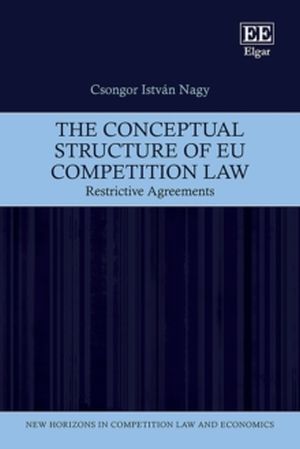
The Conceptual Structure of EU Competition Law provides a systematic overview of the key theoretical issues of restrictive agreements, by means of doctrinal analysis and comparative law.
Engaging in both positivist and evaluative approaches, Csongor István Nagy conceptualizes the case-law in practical terms, outlining its paradigmatic changes and apparent contradictions. Chapters explore the purpose of competition law and the structure of competition analysis; the categories of anticompetitive object; the delimitation of object and non-object agreements; the borderline and recently emerged or emerging categories; the analytical framework of effects-analysis; and the consideration of general societal values. Nagy proposes key amendments, such as a balanced approach to formalism and substantiveness, a consistent concept of anticompetitive object, a sliding scale approach to effects-analysis, and a structuralist construction for exemption.
This book is an essential resource for academics and students in competition and antitrust law and European law. Its analysis of critical case-laws is also invaluable to legal professionals and practitioners in the field.